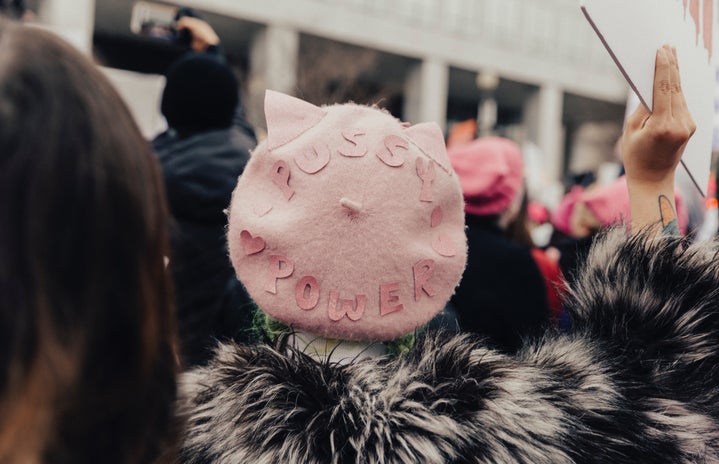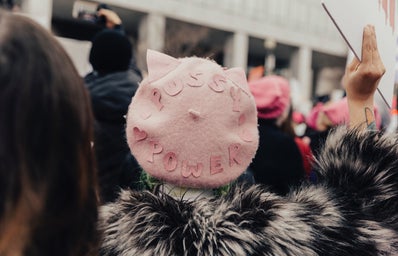Upon moving to St. Louis when I started my freshman year at SLU two summers ago, I was repeatedly asked those same two questions every freshman gets asked: “What are you majoring in?” and “Where are you from?” I replied that I was a biology major and I was a proud New Orleanian. After I said I was from New Orleans, countless people from the area told me that St. Louis has the second-biggest Mardi Gras and that I’d feel right at home. It sounded really refreshing to go to a place that felt like home and also celebrated Mardi Gras, although I’d never heard of St. Louis having any Mardi Gras celebrations at all. I also recalled a few other cities that I’d considered to have reasonably large, historic celebrations on Mardi Gras. The rumor of St. Louis having the second-largest Mardi Gras celebration greatly persists on SLU’s campus. The question is, does St. Louis really have the second-largest Mardi Gras celebration?
I think that to be considered the second-biggest Mardi Gras, two factors should be considered: the number of Mardi Gras celebrations (parades or other events) and the population of the crowd that attends the events. For a place to have the second-biggest Mardi Gras, it should rival New Orleans in one or both of these criteria. In St. Louis, Mardi Gras celebrations began in the late 1970’s. The largest celebrations include two parades that march on the weekends prior to Mardi Gras Day. There is the Purina Pet Parade two Saturdays prior to Mardi Gras and then the Bud Light Grand Parade on the Saturday Prior to Mardi Gras. These events are expected to draw greater than 500,000 attendees from the greater St. Louis Area; in addition, there are smaller events such as a 5K race and a softball tournament. St. Louis undoubtedly has a large Mardi Gras celebration, but can it be deemed the second-biggest?
In terms of population, New Orleans typically yields 1.4 million parade-goers. The only city that can rival that crowd population is Mobile, Alabama, which typically yields 1 million parade-goers. Mobile has parades beginning roughly a month prior to Fat Tuesday and has roughly 30-40 parades that march through the area. Mobile has one of the most historic Mardi Gras celebrations, even predating New Orleans’s Mardi Gras. Mardi Gras Day is a marked holiday in Mobile and its surrounding counties, signifying its historical importance to the city. Furthermore, Galveston, Texas and Lafayette, Louisiana have crowds slightly less than that of St. Louis.
In terms of the number and longevity of celebrations, Mobile certainly outmatches St. Louis by more than 30 parades. Other cities that parade more and longer than St. Louis include four Louisiana cities that are not New Orleans: Lake Charles (11 parades), Morgan City (8 parades), Houma (15 parades), and Lafayette (8 parades). In all of these cities, there are countless events in addition to parades in the month prior to Fat Tuesday.
So, how and where did the rumor that St. Louis has the second-biggest Mardi Gras begin when it has so much less momentum than cities a few miles down the Mississippi? A majority of the misconception has come from St. Louis Mayor, Francis Slay, who stated that St. Louis Mardi Gras is “the best Mardi Gras in the country. Not the largest—I think we’re the second-largest in the country—but it’s certainly the very best party.” This quote by Mayor Francis Slay has led to the widely-held belief that St. Louis has the second-largest Mardi Gras, when it is outmatched by nearly every southern city’s Mardi Gras.
Several other cities cite having large Mardi Gras parties, such as San Diego, California, and Galveston, Texas, and I believe that St. Louis’s celebration should be listed among those cities when discussing Mardi Gras. Each city has made their Mardi Gras celebrations their own and have added nuances from that city’s history and culture. St. Louis has made Mardi Gras its own and embedded its own culture into its parades and parties, which is why its parades are so widely successful in the area. St. Louis and many southern cities are similar in that they share deep French Catholic roots, which Mardi Gras is based upon. However, Mardi Gras is not nearly as embedded into St. Louis culture as it is in most southern states. Mardi Gras in St. Louis is said to have begun from a house party in 1979 and eventually flourished to include parades, meaning it is still relatively new to the city. Mardi Gras in Mobile and New Orleans has been celebrated since the early 1700s.
In addition, it should be noted that Mardi Gras is French for “Fat Tuesday,” specifying that the true holiday should be celebrated leading up to the Tuesday prior to Ash Wednesday. The date of Mardi Gras is relative to the religious calendar each year, and in New Orleans and other southern cities, it is an observed holiday where the city takes the day off to celebrate. In these places, Mardi Gras isn’t a day, but rather a season that spans about two months. The reality is that on Tuesday, March 5th, 2019, New Orleans, Mobile, and several other cities will be waking up to go to the parade route to celebrate Mardi Gras. St. Louis will wake up to just another regular Tuesday because there, Mardi Gras ends with the convenience of a work week.
There is still debate on where the second-largest Mardi Gras takes place, as there is not a clear answer because celebrations vary from city to city; however, I would readily give the title of second-largest Mardi Gras to Mobile, Alabama, or Lafayette, Louisiana before even considering St. Louis. Regardless, Happy Mardi Gras to everyone who has the opportunity to celebrate it, and Laissez les bon temps rouler!


